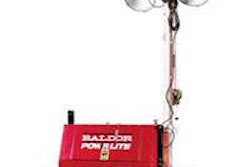The infrastructure thing
By Kirk Landers
Speaking outside the glare of the news media at the annual meeting of the American Road and Transportation Builders Association a week or so before the November elections, former Congressman Bill Lipinski said that Republican Alaska Representative Don Young and Republican Sen. Ted Stevens were right about the so-called “Bridge to Nowhere,” and their many critics were wrong.
Lipinski, a streetwise Chicago Democrat who served in Congress for decades, explained that the bridge would have connected Ketchikan, a seaport, with its airport unlocking the city’s potential to become an international trade center.
It wasn’t a bridge to nowhere; it was a bridge to economic growth. It wasn’t a boondoggle; it was an investment.
If anyone in either political party ever made this argument publicly, it was not picked up by the news media and the issue gained a momentum of its own, damaging the careers of Young and Stevens, and forcing Republican Alaska Gov. Sarah Palin to renounce a project she had once wisely endorsed.
We are a lesser society for this failure. Good bridges are a hallmark of most of the world’s successful trade centers built on archipelagos, and they all have viable international airports.
Our repudiation of the Ketchikan bridge is symptomatic of our society’s ignorance about infrastructure. Infrastructure is an investment, but we see it only as a cost.
Another case in point: Boston’s Big Dig. Nearly every word written about it for the past decade had dealt with an endless list of the project’s ills, from cost overruns to fatal construction failures. Not a single word addresses any payback from the project and yet this mega project, for all its fiscal ills, reinvented a city that was built in colonial times and had not successfully adapted to the demands of modern transportation.
Some of the benefits of this are tangible, some are not.
According to an analysis of the project’s economic impact by the Economic Development Research Group published in 2006, by the end of 2005, the Big Dig had already caused the creation of 8.5 million square feet of new convention, office and retail space, and nearly 4,000 new hotel rooms, apartments and condos, and those numbers were projected to increase exponentially over time.
With the new commercial and residential space came $7 billion in new private investment, 43,000 new jobs, and an expanded tax base. Property tax revenues directly attributable to the Big Dig are expected to eventually exceed $100 million annually, and area travelers are already saving an estimated $167 million a year in time and cost savings derived from the improved traffic flow.
To our knowledge, no one has tried to project other city, state, and regional income benefits from the new jobs, new tourism, and new mobility created by the Big Dig. Nor has anyone tried to estimate how many area jobs and businesses might have been lost over time if Boston’s notorious traffic problems had not been addressed.
It would be better to build the Big Dig more cost efficiently, with fewer mistakes, but in the end, it would be smarter to do it as badly as it was done than to not do it at all.
Similarly, we have invested $380 million on things far less worthy than a bridge that could be the key to birthing a new economic powerhouse on the opposite side of the continent.











